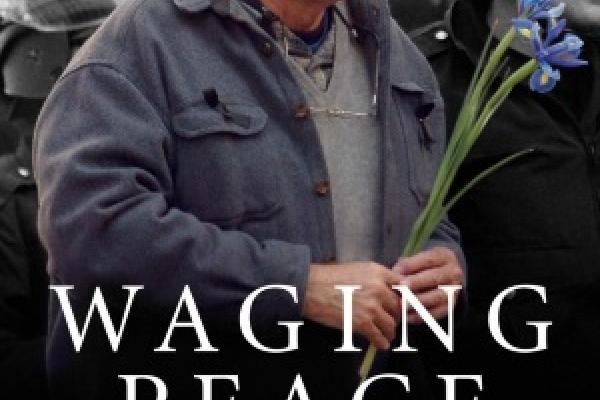WHAT LIVES THESE two authors have lived and what lessons they can teach us! Reading David Hartsough’s lively memoir immerses us in the great peace and justice events of the last several decades. Colman McCarthy’s fascinating interchanges with high school and university students propel us into a hopeful future as we see how young minds are stretched and carry lessons learned into the world.
Hartsough’s FBI file started when he organized his first anti-nuclear protest at age 15, and it may be growing still as he directs Peaceworkers, a nonviolent training and accompaniment NGO based in San Francisco. In between are 60 years of peace work in the U.S. and the flashpoints of the world, always bringing the message of the necessity and efficacy of nonviolent direct action. In Waging Peace he relives the adventurous life of a professional peaceworker as well as the silent efficacy of his family’s tax resistance and tradition of simple living.
Whether disarming with words a knife-wielding segregationist opponent at a Virginia lunch counter, blockading with a canoe a weapons ship bound for Vietnam, or traveling to war zones, Hartsough has faithfully carried forward his commitment to nonviolence. Sometimes visiting conflict sites before they reach the radar even of other peace people, he writes of going to Cuba, Russia, Yugoslavia, and the Berlin Wall while still a college student, to Central America during the ’80s, and later to Gaza and other war zones.
In 1999, after trying unsuccessfully to persuade the world to support nonviolently the beleaguered Kosovars and thus avert a Serbian bloodbath, Hartsough attended a peace conference in The Hague. There he met Mel Duncan, and together they founded the Nonviolent Peaceforce, now the largest of several worldwide movements of accompaniment for nonviolent activists.
In California, Hartsough worked to launch the huge Abalone Alliance against the Diablo Canyon nuclear power plant and campaigned against the development of nuclear weapons at the University of California’s Lawrence Livermore National Laboratory. In this century, Hartsough was one of the first to be arrested for protesting drone warfare at Creech Air Force Base.
Read the Full Article

